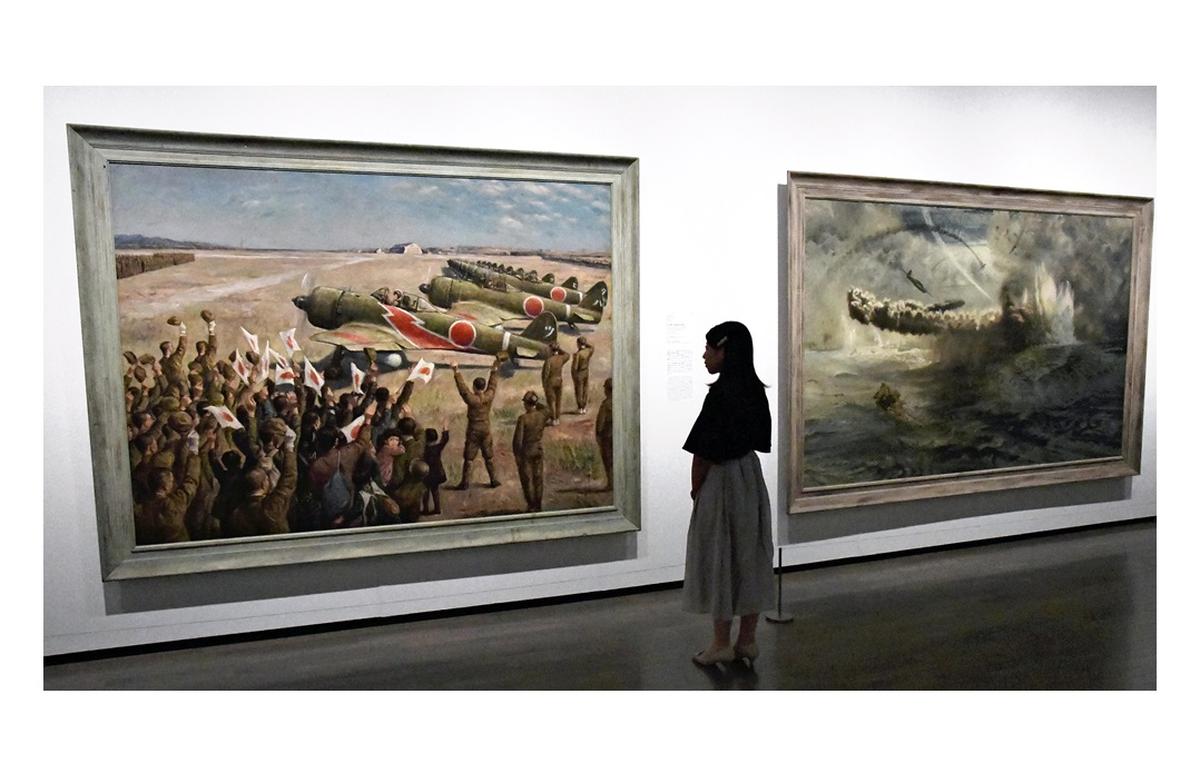
The Yomiuri Shimbun
Usaburo Ihara’s “Special Attack Corps Setting Out from a Homeland Base I” (1944), left, and Saburo Miyamoto’s “Banda Unit Fighting Fiercely off Philippines” (1945) are seen at the National Museum of Modern Art, Tokyo.
20:00 JST, October 7, 2025
Paintings, documents and other images related to the wars in the Asia Pacific region, such as the Pacific War and the Vietnam War, are on display at the National Museum of Modern Art, Tokyo.
The exhibition “Opening Documents, Weaving Memories,” which includes large-scale war record paintings, focuses on the documentary role of visual media through 280 items, including newspapers, newsreels and posters.
There are 153 war record paintings, which were created during the period between the Sino-Japanese War and the Pacific War at the museum. The pieces were returned to Japan as an indefinite loan after the U.S. military confiscated them after World War II.
The exhibition features 24 war record paintings, including Tsuguharu Fujita’s “Battle on the Banks of the Khalkha, Nomonhan” (1941) and “Final Fighting on Attu” (1943), as well works by Saburo Miyamoto and Ryohei Koiso.
Other items on display include posters and graphic magazines encouraging Japanese people to develop Manchuria and Mongolia. Travel brochures and postcards promoting tourism to China, Manchuria and the Korean peninsula can also be seen.
The exhibition also looks at the period after World War II.
Works by artists from Asian countries are also on display, such as one by a Korean painter depicting the oppression of the “March First Independence Movement.”
The pieces painted by atomic bomb survivors depicting the horrific scenes right after the atomic bomb was dropped are overwhelming.
“Stop the Killing” by Taro Okamoto, an anti-war ad created in response to the Vietnam War and vinyl records of old military songs that became popular again during that period can also be viewed at the exhibition.
“We hope that visitors will understand how art conveyed the message of wars,” said a museum official.
The official added that the museum “hope the exhibition will pose the question of how we, as a post-war generation that has never experienced an actual war, could weave the memory of war based on existing materials, such as war record paintings.”
The exhibition is scheduled to run through Oct. 26.


AloJapan.com